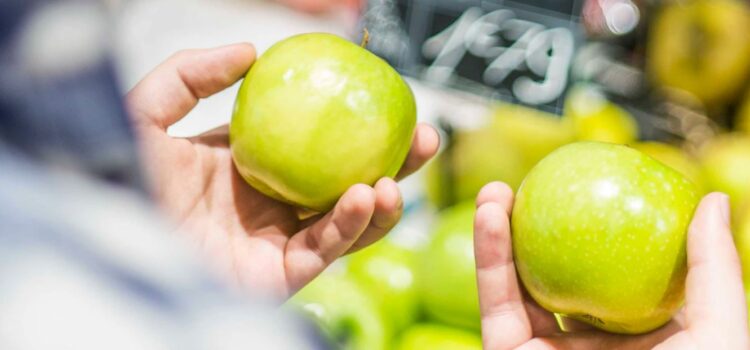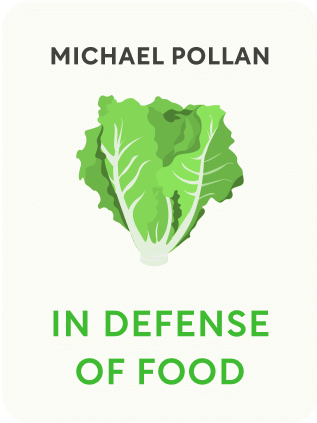

This article is an excerpt from the Shortform book guide to "In Defense of Food" by Michael Pollan. Shortform has the world's best summaries and analyses of books you should be reading.
Like this article? Sign up for a free trial here .
What do nutritionists recommend eating whole foods? Which whole foods are the healthiest?
There are significant health benefits to eating predominantly whole foods. However, not all whole foods are created equal—some are healthier than others.
Here are few rules that can help you identify which whole foods you should be eating for optimal health and vitality.
Why You Should Be Eating Whole Foods
The evolutionary relationship between humans and plants greatly explains why they are so good for us and why a diet focused on eating plant-based, whole foods is a healthier option. Even Thomas Jefferson said that meat should be eaten more as a flavoring to support vegetables, rather than the main dish.
At the end of the day, a switch to eating whole foods of any type is going to be beneficial. In fact, other cultures who eat traditional diets still experience greater health than Western eaters simply because of the priority on whole foods. Still, not all whole foods are created equal, and a few rules can help you identify which ones provide the most benefit.
Rule #1: Plants and Leaves Are Best
One benefit of eating plants is the amount of antioxidants they provide the body. Vitamin C is one of the most important. Your ancestors were able to produce vitamin C internally. This process helped reduce the amount of free radicals—oxygen atoms containing an extra electron—created whenever cells metabolize or the body fights inflammation. Free radicals are believed to be associated with cancer and other ailments experienced with age. Vitamin C and other antioxidants stabilize the free radicals before they can cause harm.
Vitamin C and other antioxidants also entice the liver to produce enzymes to break the antioxidants down and other compounds in the body, like toxins. In this way, antioxidants are detoxifiers, helping to rid the body of carcinogens and other dangerous compounds. The greater variety of antioxidants, the greater variety of toxins targeted.
However, the large plant-based diet of your ancestors contained so much vitamin C, the body had no need to continue producing its own. This ability was weeded out through evolution and made humans dependent on plants to receive these vital nutrients. This is one of the main reasons they are so good for you.
There are various other benefits humans get from plants. Vegetarians tend to be healthier and live longer. Plants also have fewer energy properties, hence, fewer calories. And unlike meat, which you don’t need to survive, you do need plants to survive. Still, meat does provide some essential amino acids, so a diet including small portions of meat is not necessarily a bad thing.
The problem with meat comes from the way we consume it and the way it is processed. The large portions of meat as main courses is extreme, and industrialized meat is not good. Meat sits at the top of the food chain, so it has the distinction of soaking up all the nutrients—and toxins—running up that chain. Thus, meat is the pinnacle evidence for why the health of the food chain is so important, which relates to the second rule.
Rule #2: You Are Not Just Eating What You Eat
The importance of healthy soils for produce and plant-based diets for animals cannot be overemphasized. Eggs, meat, and dairy are only as healthy as the animal they come from. When animals are fed only grain, they get sick, especially cows and sheep, which requires antibiotics to heal them. Those digested medications stay in the food. Likewise with chemical fertilizers and produce.
It’s worth the extra money to buy pastured animal products and fresh produce grown locally to ensure the quality of the food you will eat. An egg from a free-range chicken is not the same egg as that from an industrialized chicken. Humans are animals, so if it stands to reason that we live healthier lives on a diet of mostly plants, it stands to reason that the animals we eat do as well.
A separate freezer can be a great investment to help you eat the right kind of foods without spending a lot of money. The small investment in a freezer can save money down the road if you find a good source of pastured meat and buy it in bulk. Produce can also be purchased in bulk at farmer’s markets at the height of the season and frozen. The benefit of a separate freezer is that you open it less frequently than the one you use for daily use, and freezing vegetables retains more nutrients than canning.
Rule #3: Be a Smarter Omnivore
Whether you eat plants or plants and animals, diversifying the species of each helps to cast your nutritional net wide for greater benefits. Eating a wider variety of foods also helps support farm biodiversity, which reduces the need for pesticides and soil enhancements that trickle up the food chain. Both of these results support your health. A couple of tips can help you live a better omnivore life.
Good Foods Grown in Good Soil
You’ve heard a lot about the health of soil and the health of the food chain already, but eating foods grown in good soil is not as simple as eating organic foods. There is a tendency to equate the word “organic” with health, but this is not always the case.
Processed organic food is not much different than processed conventionally grown foods. Organic cookies and organic soda are still cookies and soda. Your body must deal with the imitation ingredients the same way regardless of soil.
Real food is a different story. Organic real food shows higher values of antioxidants, vitamins, and other nutrients than its conventional counterparts. However, organic food loses some of its nutritional quality when it travels great distances to reach your store. There are many local farms and ranches that may not fit into the government-issued standards for certified organic that still grow and raise quality food. And they likely provide different species than those found on commercial farms.
Wild Foods Are Good Foods
Foods existing in the wild are responsible for their own preservation without human interference. Because of this, wild greens are some of the most nutritious food there is. They contain more phytochemicals, which is what helps plants ward off pests and diseases and have many antioxidant and anti-inflammatory properties.
Wild game is also more nutritious because it has more omega-3s and less saturated fat from a lifestyle of eating plants and roaming. Grass-fed beef comes close to resembling the nutritional value of wild game.
Wild-caught fish are also better than farm-raised fish because of their diet of algae and other fish who eat algae. Farm fish tend to be fed more grain. However, many fish and animal species are becoming endangered in the wild, so you need to understand which wild foods are both good for you and the environment. Fish like salmon, sardines, and mackerel are good options and contain many essential nutrients.
Rule #4: Eat Like Europeans, Asians, and Latinx Populations
Other cultures have more deeply ingrained traditional diets than the Western diet and eat fewer processed foods. The advantage of traditional diets is that the food has been vetted through years of trial and error for its effectiveness in fulfilling the body’s dietary needs. A long relationship between the people and the food exists, and the food chain tends to be more harmonious.
For instance, areas where the climate is hot tend to eat spicy foods. Spices help decrease body temperature. They also have antimicrobial properties that fight issues caused by rapidly decaying foods in hot climates. The hotter the climate, the spicier the food tends to be.
Other traditional foods are chosen for purely cultural origins. Foods are often tied to identity and culture uniqueness, which separates them from other cultures. Kosher and halal foods are good examples of this type of cultural identity. These cuisines tend to eschew change and remain over generations.
Still, other forms of traditional diets are entwined with nature, both biologically and ecologically. In some cultures, people use their experience-based knowledge of food to decide what to eat and how to prepare it.
- In Latin America, corn and beans are typically eaten together. Both include an amino acid the other is lacking, so they balance each other out in the system. They also grind corn or soak it in limestone, which helps preserve and enhance its B vitamin compounds. The people likely didn’t know these facts, but they paid attention to the way their bodies responded.
- When other cultures first started eating corn without the cultural context and familiarity, they became sick.
- Similarly, Asian cultures eat a lot of fermented soybeans and soy curds, or tofu. Soy has properties that actually counteract the body’s endeavor to absorb minerals and nutrients, disrupt hormonal processes, and resist the breakdown of its protein. Over generations, Asians learned how to manage the soybean to make it more digestible and beneficial.
As opposed to industrialized processing, these traditional processing techniques have proven over time to keep people alive, nourished, and healthy. The long relationship with the whole foods led to an understanding of their properties and benefits. This knowledge created standardized dietary habits that have persisted. This idea points to an important sub-rule: stick with tradition.
Rule #4a: Be Skeptical of Nontraditional Foods
Ingenuity is great in many industries, but food is not one of them. If healthy diets are the result of generational and evolutionary experience and growth, new and “improved” foods are outliers of tradition, likely for a reason.
The example of soy explains this better. In America, we eat a lot of soy, but it varies greatly from the way Asians eat it based on their long history with soy. Soy is consumed as oil, textured vegetable protein, soy protein isolate, and isoflavones. These forms are all implicated in various health concerns. For instance, isoflavones resemble estrogen in the body and latch onto estrogen receptors. This action is believed to affect cancer, menopause, and other system processes. However, research has not yet decided whether the effect is good or bad. If it’s in question, why gamble?
The Asians may or may not have the answer to this scientific question. But their use of soy over generations with positive health results seems more legitimate as evidence than a lack of evidence. There may also be other aspects of the Asian diet that support soy differently than in the Western diet. This idea points to another sub-rule: eat a traditional diet completely for its benefits.
Rule #4b: There Are No Magic Foods
In the same way that the benefit of whole foods has more to do with internal synergy than any specific nutrient, the benefit of dietary patterns is related to internal synergistic aspects, not a particular ingredient.
Countless studies have tried to identify the magical ingredient in the Mediterranean diet that makes it so healthy. Is it lemons, olive oil, fish, or nuts? Similar studies have attempted to understand the French paradox. Is it the red wine, olive oil, foie gras, cheese? But none of these studies ever finds one food that explains the health outcomes of the eaters, namely a lack of Western diseases and improved health overall.
Compounding the issue is that many traditional diets seem to include foods seemingly unhealthy. The French diet involves lots of saturated fats and wine. The Mediterranean diet involves more fats, like olive oil, than recommended (40% of calories, rather than 30%).
Nutritionism wants to get down to the nitty gritty to figure out which nutrient is responsible for good health. But this behavior is short-sighted and muddies the point of eating a traditional diet. Trying to isolate the magic nutrient is another reductionist attempt to determine how to replicate it through processing. But traditional diets don’t work because of one thing only. The pattern of eating is what creates the benefit.
Recent studies on dietary patterns suggest that certain complete patterns of eating do provide health benefits and can be transferred to different populations. To truly benefit from traditional diets, you can’t be hung up on nutritionism. It seems impossible to track down the magic ingredients that support these diets, and there likely isn’t one. When you approach a traditional diet, you must be willing to accept that synergy among the foods may be the most important factor.

———End of Preview———
Like what you just read? Read the rest of the world's best book summary and analysis of Michael Pollan's "In Defense of Food" at Shortform .
Here's what you'll find in our full In Defense of Food summary :
- Why eating a Western diet is killing you
- How the rise of low-fat foods contributed to the rise of obesity and diabetes
- What to eat if you want to restore a healthy relationship with your food






